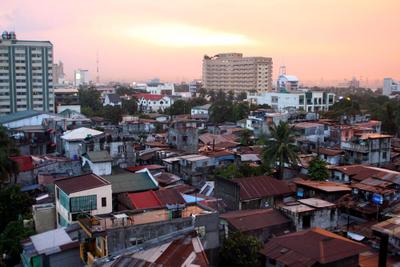Sunday at the Supermarket
(I haven't written about Spam yet, but it is extremely popular here. Check out this story.)
The frenzy is intensified by the fact that every shopper has at least three other people with him or her. After an hour of squeezing myself and my small basket between traffic jams of brimming grocery carts, I understand why people go shopping with their whole families. If traffic jams reach epic proportions in the meat aisle, the shopping cart driver can stay put while he or she dispatches an assistant to pick up the needed items. Personally, if I had this kind of grocery store backup, I would stand in line with an empty shopping cart and send my assistants out with lists of things to fill my cart.
But since I shop alone, I must navigate the store on my own and then wait in line to pay. So far, I have yet to get through a line faster than half an hour. But again, maybe I shouldn't shop on weekends.
****
Usually I hate grocery shopping, but in Asia, there's always a little adventure waiting for you in the next aisle. Here in Manila, my first trip to the grocery store was shocking. Shocking not because of what I couldn't find, but shocking because I can literally find everything. I actually had a difficult time finding food, other than mangoes, produced in the country.
To me, a country's level of "Americanization" can be measured by the cereal selection. In China, I could really only choose between Cheerios and a Chinese brand of overly sweet granola. Here, not only can I choose from an alarming number of American favorites like Frosted Flakes, Fruit Loops and Coco Puffs, but also a good sized selection of more healthy cereals. I think I must have stared at the cereal aisle in amazement for a good 15 minutes before finally choosing a Nestle concoction of banana nut clusters. (This is in a country where a traditional breakfast consists of rice and some sort of meat or fish.)
And I live in a section of Manila that is not exactly foreigner central. I can only imagine the cereal selection grocery stores in Makati, the city's business district, carry.
I believe Manila's cereal selection is something the Philippine government should advertise in brochures and reports used to lure foreign investment to the country. Then when companies relocate employees to Manila, the employees won't feel as deprived as the Larson family, an expat family in Chongqing, China recently profiled by the Wall Street Journal.
The Aug. 2 article (you have to pay to read the story, so the link is sort of useless), details the lives of American families that relocate to China for jobs. I loved the food in China, and I think the Larsons are a bit on the extreme side, but a lot of expats try to live as if they never left home.
Like many foreigners in town, Ms. Larsen says she won't touch Chongqing's signature cuisine: "huoguo," or hot pot -- a fondue-like dish so loaded with fiery chilies that its aroma seems permanently suspended in Chongqing's air, along with diesel fumes. Supermarkets feature chicken feet jutting out of crushed ice and slabs of pork dangling from sharp hooks.
Neatly dressed in slacks, a black argyle V-neck and bright white blouse, Ms. Larsen shows off her solution to the food challenge: A closet full of cans, stacked to the ceiling, with labels like Green Giant, Crisco and Hormel -- items lugged to Chongqing in suitcases or mailed from overseas. Her birthday present in February was a silver, side-by-side U.S.-sized refrigerator-freezer.
Now if the Larsons lived here, they wouldn't have to waste a whole closet on Green Giant, Crisco and Hormel products. The Philippines has fully embraced American food and products like no country I've ever experienced outside North America.

